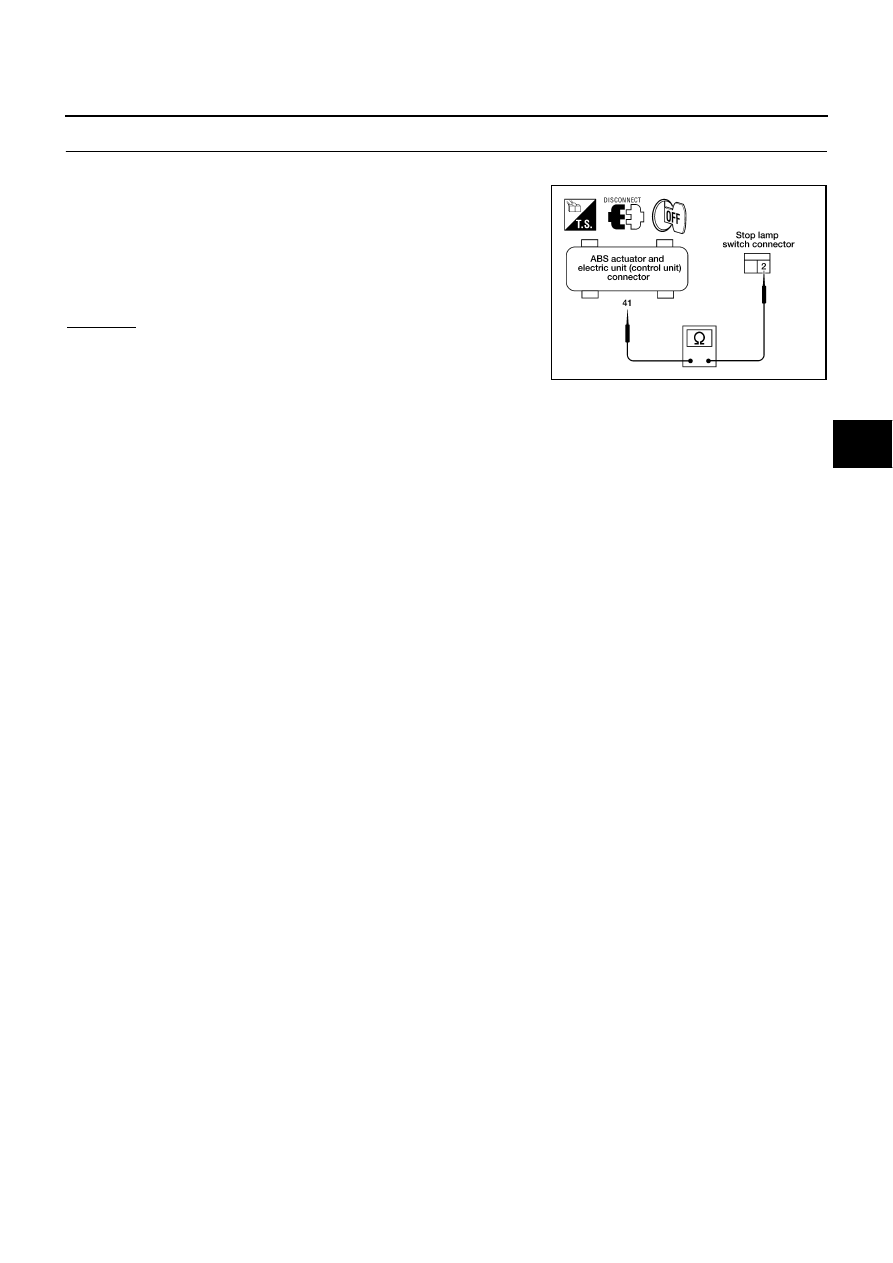Nissan Murano Z50 (2007 year). Manual - part 40

TROUBLE DIAGNOSIS FOR SYSTEM
BRC-35
[ABS]
C
D
E
G
H
I
J
K
L
M
A
B
BRC
Revision: 2006 July
2007 Murano
2.
CHECK STOP LAMP SWITCH CIRCUIT
1.
Turn ignition switch “OFF”.
2.
Disconnect stop lamp switch connector E116 and ABS actuator
and electric unit (control unit) connector E24.
3.
Check continuity between stop lamp switch harness connector
E116 and ABS actuator and electric unit (control unit) harness
connector E24.
OK or NG
OK
>> Connect connectors and perform an ABS actuator and
electric unit (control unit) self-diagnosis.
NG
>> Open or short in harness. Repair or replace harness.
41 - 2
: Continuity should exist.
LFIA0150E